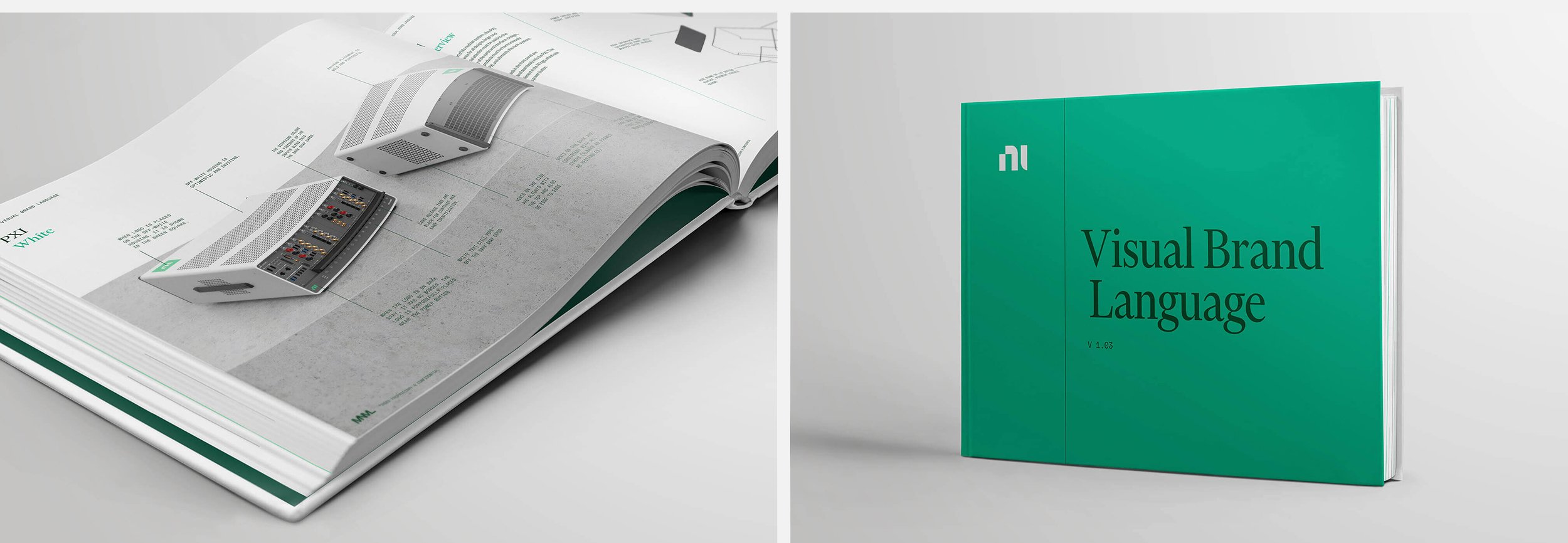Research, PRODUCT DESIGN, visual brand language, interface design
Overview
Developing a
visual brand language
_
NI (National Instruments) is an industry-leading technology brand with a proud history of innovation. Engineers around the globe use their test equipment and measurement software to produce many of the products in our daily life. Concurrent with a significant reboot of the brand identity by Gretel, NI needed a way to communicate their commitment to “Engineer Ambitiously” in a way that customers experience each time they use an NI product. The MNML team worked with NI to develop a new visual brand language used across hundreds of products.
In addition to a detailed Visual Brand Language book, the MNML team also created an process for critical review that helps NI’s new design team develop an intuitive sense of how to apply the design rules. Our goal was to make every engineer at NI part of the design team by providing clear standards and by reinforcing a culture of design thinking. Our comprehensive design guidelines are a complete toolkit for product design at NI.
ideation
The language of precision
_
The team used style boards to quickly explore a wide variety of visual themes. By combining inspiration imagery with rough 2d mockups, NI was able to quickly get a ‘10 foot read’ that illustrated a range of color, pattern, and form styles. A simple CMF provides flexible solutions for a complex product family. The language of “Frame” is precise, geometric, and pure. Its bold combination of dark gray interfaces and wrapped white shells provides the user with a clear orientation and consistent interaction point. This consistency is key for nested devices such as server racks that house mulitple PXI modules, which in turn contain many PXI cards.
Design
Concept development
_
Sketches were instrumental in the development of design elements flexible enough to be applied across an entire NI family of products. This iterative sketch process generated a large volume of concepts and facilitated technical discussions with NI prior to entering 3D.
Visualization
PXI
_
PXI (PCI eXtensions for Instrumentation) is NI's flagship product and serves as a showcase for the new design language. Venting is arranged in strict square patterns, emphasizing precision and order while also echoing the NI logo. The housing is highly directional: dark gray end caps highlight the technology inside and indicate an access/interaction point. These interfaces are recessed on each side, giving practical protection to the ports and space for airflow in the rear. They also serve to visually emphasizing the clean white protective housing which wraps tightly around the technological core.
product family
Design at scale
_
NI’s products vary dramatically in size, making CMF application a challenge. Patterns, color blocking, logo placement, and more required clear design rules that adapted to every scale without losing consistency.
UI/UX
Interface Standards
_
Many NI products are modular systems with virtually infinite configurations. It was critically important to design interface guidelines that bought order and consistency to an otherwise purely functional arrangement of ports. The examples below gives a window into NI’s new card interface standards, including port labeling, alignment, and hierarchy.
Prototyping
Validation
_
Interface designs and color pallets were validated across multiple prototypes; below, a legibility test of different fonts on various background colors.
Impact
Principles in practice
_
Each NI product reinforces the visual identity of the brand’s portfolio. A consistent design language makes each device instantly recognizable from afar and reassuringly familiar to use. Through the marriage of design and engineering, NI is able to deliver a superior product.
““I could not have been more impressed with the thoroughness, quality of work, and insights into a different way to work that helped guide us toward a design everyone was completely satisfied with.”
”















